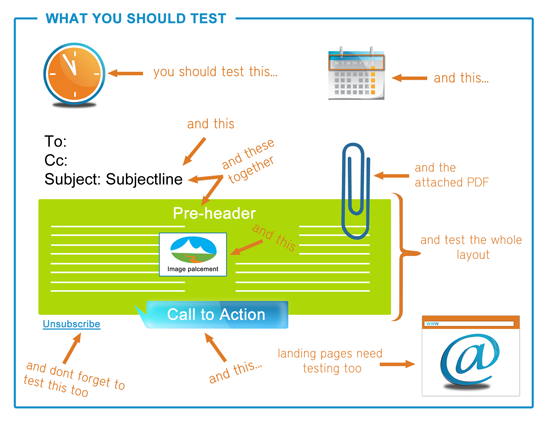The average corporate user receives about 75 emails per day, with an increasing amount being read on mobile devices. Considering that 20% of these emails are probably spam, your number one objective is to ensure that your company’s email is opened, read and that the relevant action is taken.

Your email should always have a specific purpose, whether that is a call to action to click a link to make a purchase, view an account or simply to convey important information. There are a number of key areas where you have an opportunity to grab the recipient's attention and also take advantage of understanding how customers are interacting with your emails.
It is paramount to get as many emails opened as possible, not only for the obvious reasons applicable to the consumer but also for your reputation at an ISP. Opened emails are trusted more than frequently deleted (or emails marked as spam) and the higher the rate the greater the chances of inbox penetration and inbox placement.
What to remember about first impressions?
Three key elements of your email are the subject line, FROM address and pre-header. Email recipients make split second decisions and will instantly delete or send mail to the junk mail folder if they consider it to be spam. As these are the first points of this instant evaluation, it’s important to get it right.Here are some tips:
- The FROM address should be recognizable and easy to read, for example name@companyname.com is often a better match than unknownname@department.division.company.com or donotreply@domain.com
- A subject line should accurately portray the content of the email and not mislead customers in any way, so avoid using cryptic subject lines to ‘trick’ them into reading an email, it’s a sure way to lose their trust - if you are sending out payment confirmation emails for example, a subject line such as 'We have received your payment' is sufficient
- Have a call to action in the pre-header and be very clear about the purpose of the email. The pre-header is seen alongside the subject line in most email clients and devices and is your first piece of content that can be used to entice positive action.
Always remember that testing variations of the above is extremely important because often, one combination will result in a higher open rate compared to another and there is no logical reason why.
Layout can also influence click rate
Recipients also base their decisions purely on the overall look and feel of the email. Does the mail display correctly in their browser, email client or mobile phone? Do the images take too long to load (if at all)? Is the important information or call to action in the appropriate location?The creative design of an email can be likened to photography. An aesthetically pleasing and flowing layout will be the difference between your message being received or totally overlooked.
As with subject lines, testing different layouts is important and is compounded by the fact that email clients often change the way they render emails.
For more advice on how to structure the perfect email, be sure to download our new deliverability whitepaper '7 Steps to better email deliverability'

It may be open, but have they interacted?
After achieving your perfect layout, ensure that the call to action in your email is clear.Placing too much copy before an action link or button will undoubtedly result in readers not even getting to it. Conversely, one large button saying “CLICK NOW” may be too intrusive. It’s a delicate balance between a pleasant looking layout, relevant information and a strong call to action.
In conclusion
Email deliverability is a complex subject but there are great tools in the market today that can help you get the most out of your emails. We discuss these tools and strategies in our new deliverability white paper '7 Steps to better email deliverability', click here to download it.Next week is the final installment in this series. I will be taking you behind-the-scenes and discuss some technical stuff you should know about deliverability
Alex Papadopulos
striata.com
No comments:
Post a Comment